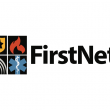FirstNet Authority releases technological Roadmap update
FirstNet Authority officials yesterday released the 2023 update to the organization’s Roadmap, which highlighted technological innovations associated with the nationwide public-safety broadband network (NPSBN) but repeatedly referenced first responders’ need for reliable communications that “simply work” in even difficult environments.
Informed by public-safety input collected via multiple outreach avenues, the FirstNet Authority Roadmap (access the document here) is designed to identify technological priorities for the ever-evolving NPSBN that are used to help guide the FirstNet Authority’s reinvestment of an estimated $15 billion during the next two decades.
FirstNet Authority CEO Joe Wassel noted that this Roadmap update “comes at a pivotal point in time” for the organization and the NPSBN, which is being reviewed to determine whether the initial five-year buildout by contractor AT&T is complete. The Roadmap update can help organization answer public-safety officials’ questions about “what’s next,” he said.
“To design this Roadmap, our team once again turned to public safety,” Wassel states in an opening letter introducing the Roadmap update. “Through our engagements and data collection efforts, we worked closely with public safety to understand their current communications challenges. We heard one theme emerge time and time again: We need it to work for us.
“It’s simple, but powerful. First responders face incredible challenges every day, and they need their tools to work—without question. This update to the FirstNet Authority Roadmap outlines ways our team can support that goal: ensuring the network remains dependable, connecting responders to each other and the critical information they need, and enhancing the network so public safety can take advantage of innovative technologies.”
Indeed, this theme of operational utility in even the most difficult communications environments is highlighted throughout the Roadmap update.
“While conducting research for the 2023 Roadmap update, the FirstNet Authority repeatedly heard responders’ need to have tools simply work,” the Roadmap states. “This sentiment appeared in the prioritization survey conducted by the FirstNet Authority and in interviews, and strong parallels emerged in documents published by other organizations.
“Technology has greatly enhanced abilities in society, and it can do the same for first responders—if designed and built with the unique needs of responders in mind.”
Since the first iteration of the Roadmap was released in August 2019, the Roadmap has focused on six “technology domains” associated with NPSBN, described in the update as: core (functioning of the network), coverage (access to the network), secure information exchange (secure and reliable access), situational awareness (access, collection and distribution of critical information), user experience (how responders use and interact with the network) and voice communications (mission-critical services, with an emphasis on mission-critical push to talk, or MCPTT.
These domains remain points of emphasis today, but the updated Roadmap also includes focus in on three key areas: “supporting solutions that ensure a dependable network, enable connected responders, and prepare for operationalizing advanced technologies.” (emphasis included in the Roadmap)
“Research for the 2023 Roadmap indicated that some of the domains (Core, Coverage, Secure Information Exchange, Situational Awareness, User Experience, and Voice Communications) and priorities identified in the 2020 Roadmap remain accurate and important to addressing the needs of public safety, while others were shown to be enablers of capabilities, rather than needed as standalone priorities,” according to the Roadmap update.
“In crafting the 2023 Roadmap update, the FirstNet Authority incorporated elements and priorities from the 2020 Roadmap, as appropriate, into the end goals and priorities that are outlined below. This provides opportunities for the FirstNet Authority team to work in new ways across the domains to develop ideas and solutions that address the goals of the 2023 Roadmap.”
Some of the tools used by FirstNet Authority to gather public-safety input for the Roadmap update included exclusive interviews with “technology decision-makers,” who “overwhelmingly agreed that coverage is ‘king.’” Other public-safety input was gathered during outreach sessions conducted by the FirstNet Authority at various events, including conferences, trade shows and FirstNet-specific opportunities.
In addition, the FirstNet Authority conducted a prioritization survey last fall to assess 19 operational need/impacts. There were 240 respondents—from a variety of agencies located in 46 different states—and the Roadmap state that the following three resiliency-oriented items were rated most important, by significant margin:
- “Maintain voice and data services, despite impacts to network infrastructure;
- “Maintain one-to-one and one-to-many communications when FirstNet network is down or unavailable; and
- “Access broadband indoors, regardless of building materials or style.”
Beyond these three primary items, survey respondents also cited the importance of: the ability to share location information across agencies, access to broadband connectivity outdoors in typical areas of operation, being able to view all relevant incident information in one solution or a single screen, the ability to use broadband devices in poor weather conditions while wearing personal protective equipment (PPE), the ability for applications to interoperate, and the ability to deploy coverage without carrier support.
“Many of the conclusions drawn from the prioritization survey and interviews were echoed in these documents,” according to the Roadmap. “Coverage is critical; responders need to be able to maintain communications via voice, video, and data; they need to be able to incorporate real-time data into decision making; data sharing helps reduce information silos; and adapting to and leveraging technology is critical to improving service delivery.
“The FirstNet Authority team also saw the same general theme in many of these documents—if the technology isn’t useful or doesn’t work easily, it is useless for responders. It needs to work.”
















